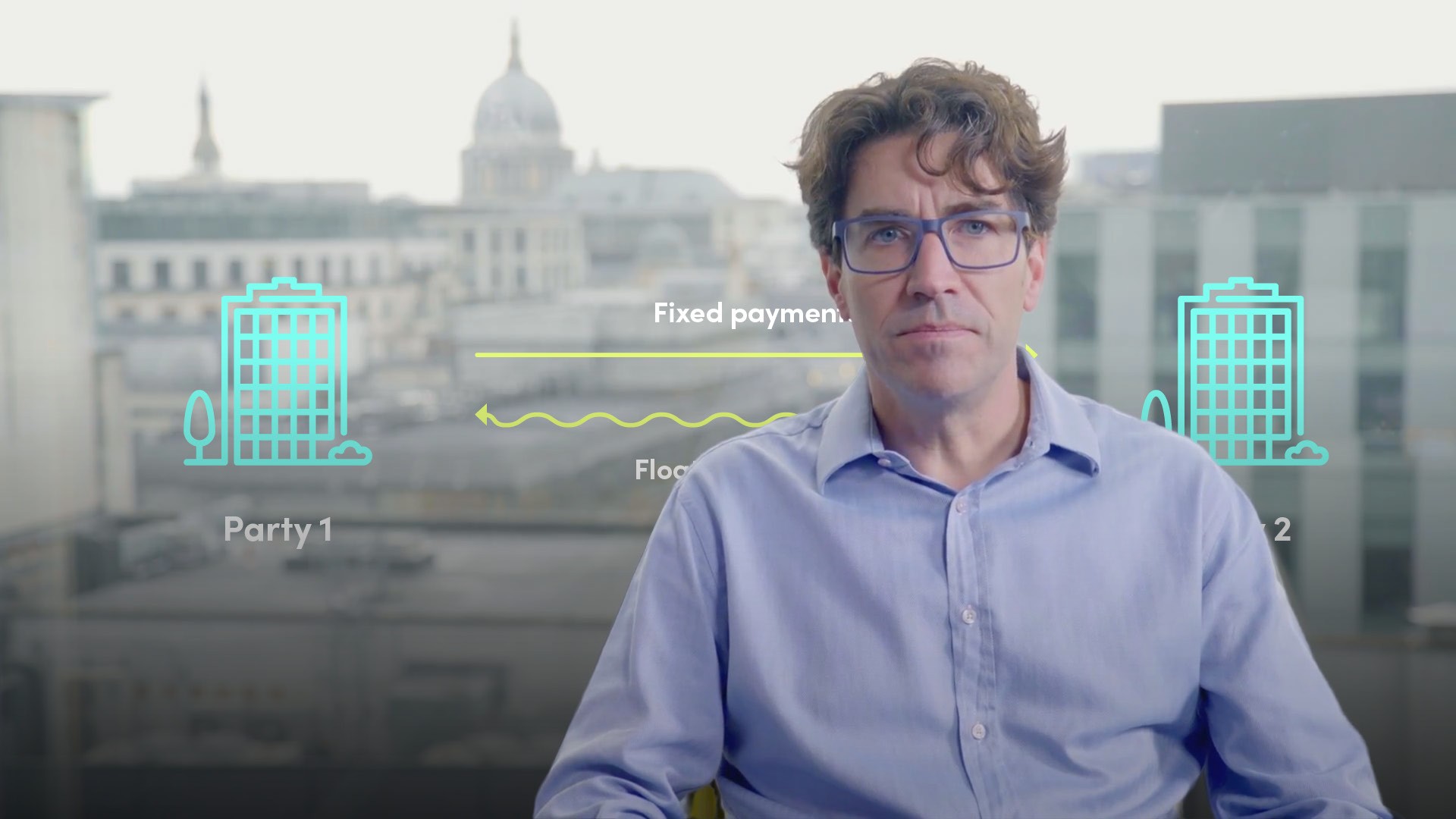
Introduction to Interest Rate Swaps and Use Cases

David Leeming
25 years: Trading & derivatives
David provides an overview of interest rate swaps - what they are, why they are used, typical parties involved and key components of the derivative.
David provides an overview of interest rate swaps - what they are, why they are used, typical parties involved and key components of the derivative.
Subscribe to watch
Access this and all of the content on our platform by signing up for a 7-day free trial.

Introduction to Interest Rate Swaps and Use Cases
17 mins 57 secs
Key learning objectives:
Define the key components of and parties to an interest rate swap
Explain a liability swap and how they are used
Explain an asset swap and how they are used
Overview:
An interest rate swap (IRS) is an over-the-counter derivative contract between two parties who agree to exchange a series of future interest rate payments. One of the parties commits to paying a series of fixed payments over the life of the contract; the other commits to paying a series of floating-rate payments.
Subscribe to watch
Access this and all of the content on our platform by signing up for a 7-day free trial.
What are the key components of an interest rate swap?
- The party making fixed payments is known as the swap payer
- The party receiving fixed payments is known as the swap receiver
- The contracting parties agree to the length – or tenor – of a swap at inception
- The frequency of payments is also agreed at inception
- Fixed-rate payments are typically made once or twice a year, hence annual or semi-annual
- Floating-rate payments are typically made every 3 or 6 months, so quarterly or semi-annual
- To ensure consistency in the way that swaps are quoted, various conventions apply to how market-makers publish swap rates, which vary from currency to currency and sometimes by the tenor. Sterling swaps with a tenor of two years or greater are published on the basis that fixed and floating payments are made semi-annually (hence a semi-semi convention). US dollar swap quotes are made with the same assumption. A euro swap is quoted on the assumption that the payer pays annually but receives semi-annually
- The final critical component of a swap before counterparties start to negotiate price is the notional amount. Where the notional is a million dollars and the payer has contracted to make annual payments of 5% over the life of the swap, those annual payments will each be $50,000
- When swap payments fall on the same day (as they would in semi-semi swaps) amounts payable are netted i.e. only the difference will change hands, thereby reducing counterparty credit risk and transaction costs
What is a liability swap?
A liability swap is an arrangement where a company sells a fixed-rate bond to investors but enters into an interest rate swap with a bank to receive fixed-rate payments (which it passes to its bond investors) and pays a floating-rate (typically LIBOR) to the bank counterparty.
Most investors like to know exactly what return they will be getting, so most bonds are issued with fixed rates, which sets their liabilities for the life of the bond. But many companies prefer to have liabilities that float in line with the performance of the economy. So if they issue fixed-rate bonds and swap their fixed-rate liabilities for floating-rate ones, they achieve twin aims of selling fixed-rate bonds to investors but having liabilities more closely match the performance of the economy and their own business. This need is particularly acute for companies in cyclical sectors, since when the economy deteriorates they can reasonably expect interest rates to fall, thereby reducing their interest costs.
If the rate at which a company can borrow from investors matches the swap counterparty’s quoted swap rate of, say, 5%, the cash flows in effect cancel each other out. But on a given day, the market might demand that one issuer pays 5% but that another pays 5.5% because of its worse credit rating. Since there is only one rate for a five-year swap in a given currency, any differential to the bank’s swap rate is accommodated in a spread over the floating rate. So a bank paying 5.5% fixed to the worse credit receives LIBOR + 0.50% (or 50 basis points).
What is an asset swap?
An investor wanting to own a bond of a given company in floating-rate format can buy a fixed-rate bond and enter into an IRS with a bank counterparty whereby the investor pays the fixed coupon to the bank against a swap notional that matches the amount of bonds they have bought; the bank pays a floating rate to the investor. This is an asset swap.
In another example, an investor identifying a bond of a company paying a 6% fixed coupon trading at a price of 95 can enter into an asset swap with a bank counterparty, whereby the bank buys the bond at 95 and sells it to the investor at 100 via an IRS. The bank receives the 6% coupon and pays the investor a spread over LIBOR. The size of the spread is calculated from:
a) The difference between the five-year swap spread and the 6% coupon i.e. 1% or 100bp
b) The difference between the purchase price of the bond (95) and par (100)
If the five-year swap rate is 5%, the bank pays 1% (or 100 basis points) over LIBOR to make up the difference to the 6% coupon on the bond. But the bank has also taken 5% of the value of the bond upfront (i.e. it bought the bond five points below par but sold it to the investor at 100). This upfront payment is also distributed through the spread over LIBOR. If that 5% is spread out over the five-year life of the bond, that equates to another 100 basis points, giving the investor an asset yielding LIBOR plus 200bp.
Subscribe to watch
Access this and all of the content on our platform by signing up for a 7-day free trial.

David Leeming
There are no available Videos from "David Leeming"



























